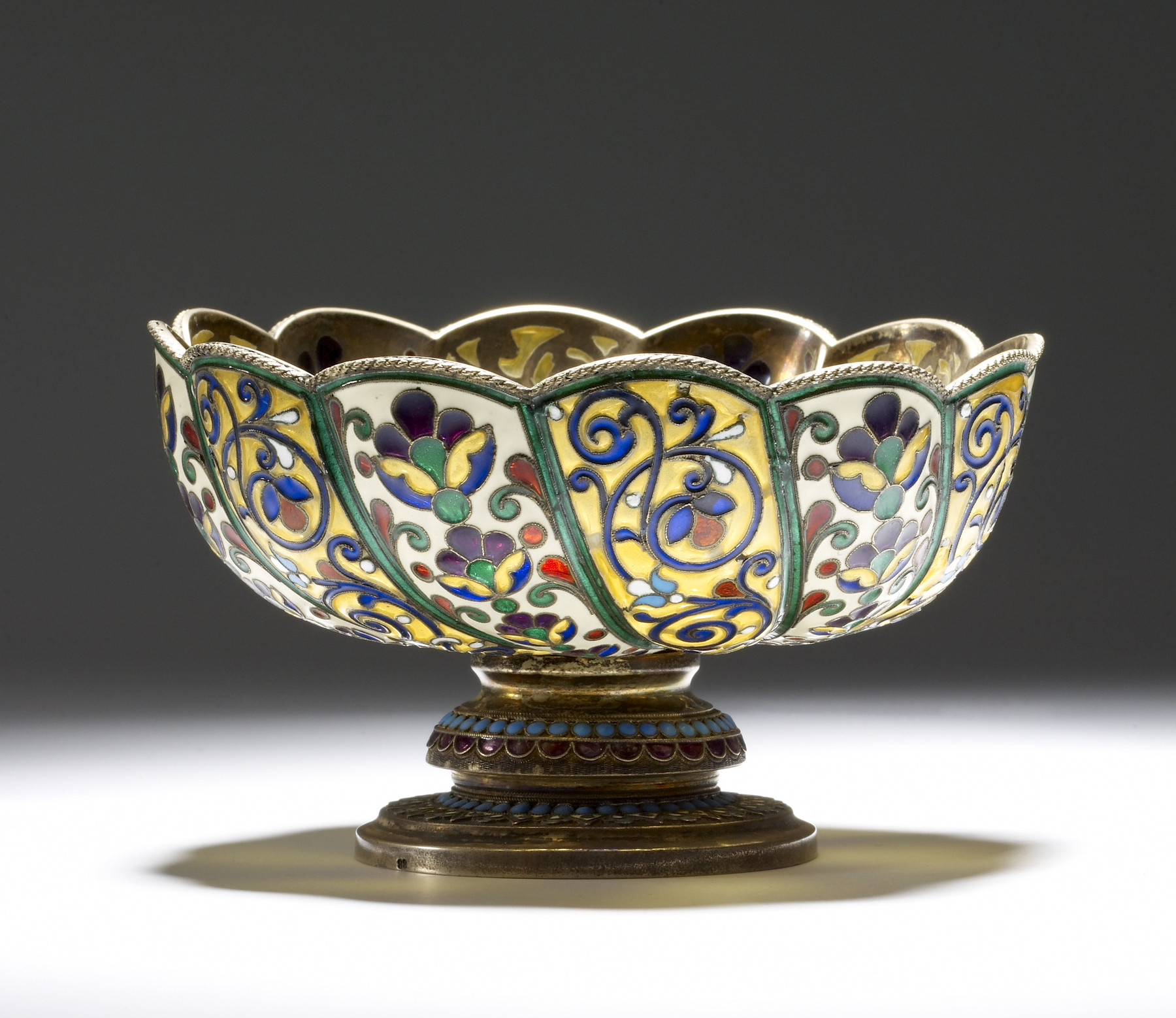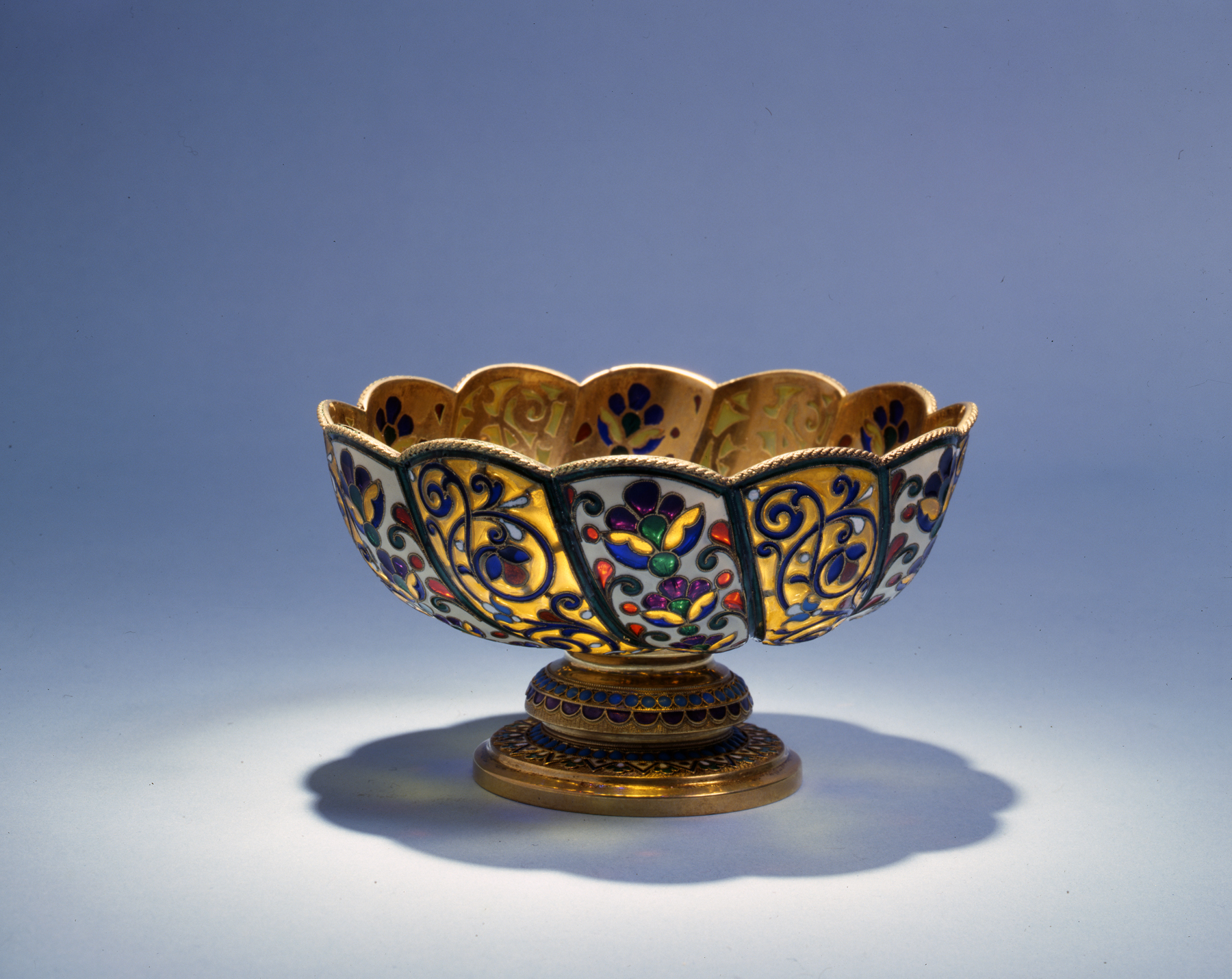Bowl
(18th and 19th Centuries )
The bowl's walls are divided into twelve swirling lobes. They are in opaque filigree enamel floral designs set against plique-à-jour enamel alternating with those with plique-à-jour floral patterns incorporated into opaque filigree backgrounds. The former appear in blue, white, turquoise and foil-backed red whereas the latter are composed of red, blue, yellow, and green motifs over a cream ground.
The upper portion of the foot is divided into an upper section banded with rows of turquoise beads and violet half-moon shapes. On the lower portion are a row of turquoise beads and designs of alternating triangular shapes in white and green.
Engraved in the center of the bowl is the monogram MLQ in Latin letters suggesting that this bowl, as was true of most of Kuzmichev's works, was exported and sold through Tiffany & Co. in New York.
Inscription
Provenance
Provenance (from the French provenir, 'to come from/forth') is the chronology of the ownership, custody, or location of a historical object. Learn more about provenance at the Walters.
Jean M. Riddell, Washington, D.C. [date and mode of acquisition unknown]; Walters Art Museum, 2010, by bequest.
Geographies
Russia, Moscow (Place of Origin)
Measurements
H: 2 7/8 x W: 4 3/4 in. (7.3 x 12.07 cm)
Credit Line
Bequest of Mrs. Jean M. Riddell, 2010
Location in Museum
Not on view
Accession Number
In libraries, galleries, museums, and archives, an accession number is a unique identifier assigned to each object in the collection.
In libraries, galleries, museums, and archives, an accession number is a unique identifier assigned to each object in the collection.
44.840




